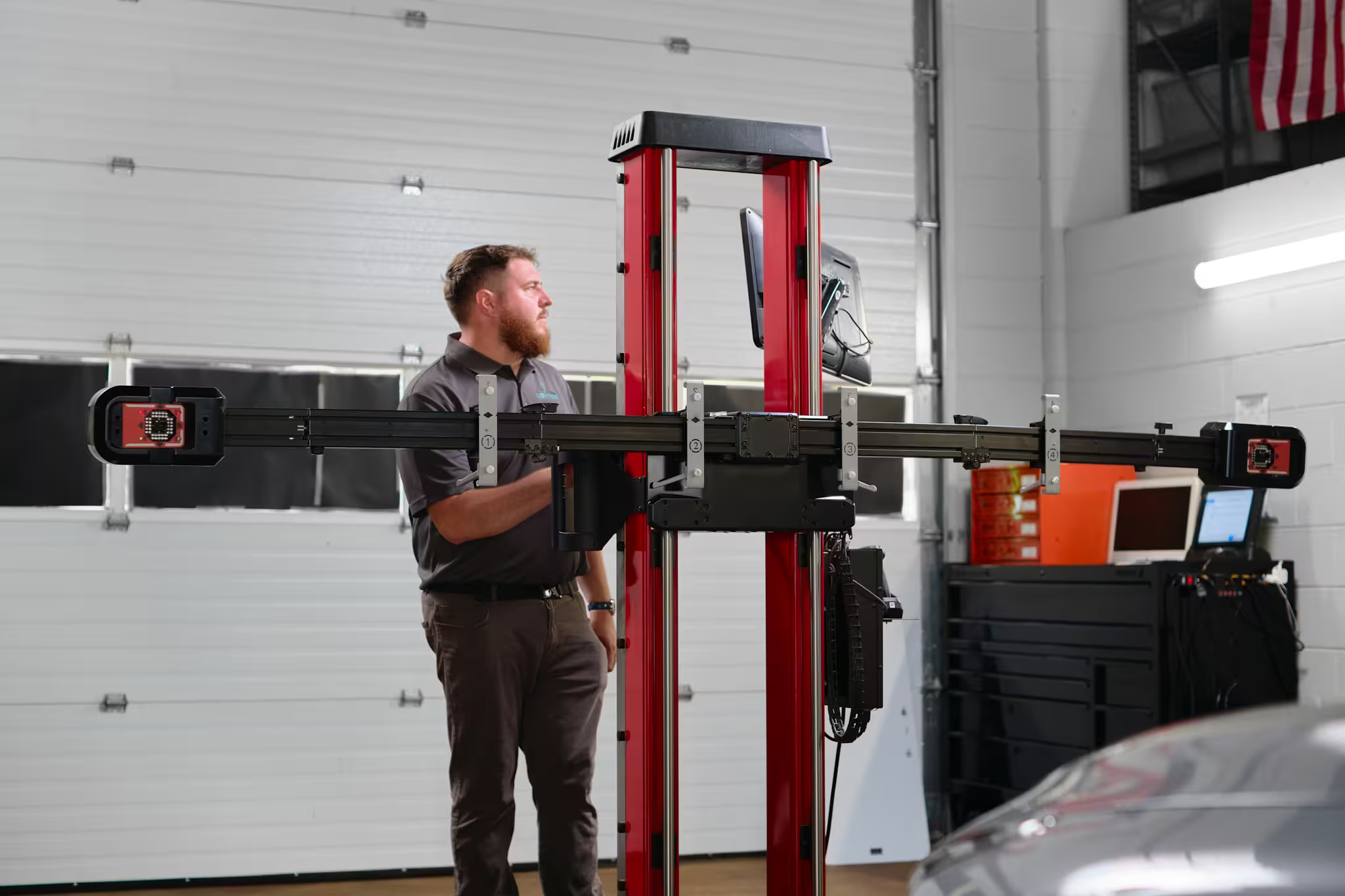ADAS Calibration and Programming: Getting Started
The essential guide to understanding, performing, and integrating ADAS programming and calibration into your shop’s services.
August 12, 2025

Your shop has been handling collision repairs for years, but now every windshield replacement seems to come with an unexpected question: "Do I need ADAS calibration?" What used to be a straightforward glass replacement has evolved into a complex procedure involving cameras, sensors, and specialized programming equipment that many shops are still learning to navigate.
Traditional automotive repair focused on mechanical systems with clear, visible problems. ADAS systems have changed that— especially when ADAS programming is required.
The challenge isn't just technical—it's also business-related. Shops that haven't invested in ADAS programming capabilities find themselves turning away profitable work or subcontracting out when they could have kept the profit in-house. Meanwhile, insurance companies increasingly require proof that proper calibration procedures were followed after any repair involving ADAS components.
This post will explain what ADAS programming involves, how it’s different from ADAS calibration, and how to get started building these capabilities in your shop.
Understanding ADAS programming basics
ADAS programming involves installing software into blank replacement control modules or (less commonly) updating existing software on control modules. This is fundamentally different from calibration, which focuses on aligning sensors and cameras to work within precise specifications.
When you replace an ADAS control module, the new component arrives as essentially a blank computer. Programming involves installing the vehicle-specific software that allows the module to communicate with other systems and perform its intended safety functions. This software contains the algorithms, parameters, and communication protocols specific to that vehicle's configuration.
Modern vehicles use dozens of interconnected control modules that must work together seamlessly. Each module requires specific software that's matched not just to the vehicle make and model, but often to specific option packages, trim levels, and even individual vehicle identification numbers (VINs).
How ADAS programming differs from calibration
While both programming and calibration are essential for ADAS functionality, they serve completely different purposes and occur at different stages of the repair process.
ADAS programming involves the software side of component replacement. When you install a new radar sensor, camera, or control module, programming ensures the new component has the correct software to function within that specific vehicle's network. This includes installing the operating software, configuring communication parameters, and enabling features based on the vehicle's equipment level.
ADAS calibration involves the physical alignment and adjustment of sensors and cameras. Even after a component is properly programmed, calibration ensures it's positioned correctly and can accurately interpret its environment. Calibration teaches the system where the vehicle's centerline is, how to recognize lane markings, and how to calculate distances to other objects.
Think of programming as teaching the component what to do, while calibration teaches it how to do it accurately in its specific mounting location. Both are typically required when replacing ADAS components, and the programming usually must be completed before calibration can be performed successfully.
When ADAS programming is required
Understanding when programming is necessary helps shops plan work accurately and ensure customer safety. ADAS programming requirements are primarily triggered by component replacement rather than repair scenarios (which would likely trigger calibration).
- Control module replacement: Any time an ADAS control module is replaced, programming is required to install the vehicle-specific software. This includes modules for adaptive cruise control, automatic emergency braking, lane keeping assistance, and blind spot monitoring systems.
- Sensor and camera replacement: Replacing ADAS sensors or cameras often requires programming the new component to communicate correctly with existing control modules. While the sensor itself may not need software installation, the vehicle's network must be updated to recognize and integrate the new component.
- Software updates: Manufacturers occasionally release software updates that improve system performance, address known issues, or add new functionality. These updates require programming procedures to install the new software on existing modules.
- Gateway and communication module replacement: Central gateway modules that manage communication between ADAS systems require extensive programming to restore proper network communication and system integration.
Why you need both ADAS programming and calibration
Most ADAS component replacements require both programming and calibration to restore proper system function. Attempting to perform only one procedure typically results in systems that don't work correctly or throw diagnostic codes.
Programming ensures the new component has the correct software and can communicate with other vehicle systems. Without proper programming, the component may not function at all, may operate with reduced capability, or may cause error messages that prevent other systems from working correctly.
Calibration ensures the programmed component can accurately interpret its environment and provide reliable input to the vehicle's safety systems. A properly programmed camera that's misaligned could cause lane departure warnings to activate incorrectly or prevent automatic emergency braking from detecting obstacles.
The relationship between programming and calibration extends beyond individual components. Modern ADAS systems use data fusion, where multiple sensors and cameras work together to create a comprehensive understanding of the vehicle's environment. Each component must be both properly programmed and accurately calibrated for this integrated approach to work effectively.
From a liability perspective, performing both programming and calibration procedures according to manufacturer specifications provides critical protection for shops and technicians. If an accident occurs involving a vehicle where ADAS work was performed incorrectly, documentation showing adherence to complete manufacturer procedures can provide important legal protection.
Getting started with ADAS services
Effective ADAS programming and calibrations combine the right diagnostic equipment with current, accurate information about requirements. Having sophisticated tools is only valuable if technicians know which calibrations are required and can access current manufacturer procedures.
Revv streamlines ADAS programming workflows by providing instant access to VIN-specific calibration requirements and step-by-step procedures. When repairs trigger calibration needs, Revv ensures you have current manufacturer procedures and can identify all required programming for each vehicle.
Book a demo today to see how Revv can improve your ADAS programming capabilities while ensuring you never miss required calibrations.
